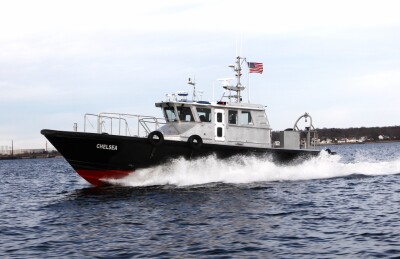Yesterday marked the official opening of the six-month Atlantic hurricane season, and this year's storm forecast looks good for Gulf energy interests.
The National Oceanographic and Atmospheric Administration’s (NOAA) Climate Prediction Center recently released its 2015 Atlantic hurricane season forecast. It’s very similar to the one that came out of Colorado State University in early April, calling for a below normal hurricane season.
NOAA’s forecast is calling for six-to-11 named storms (12 is average), three-to-six hurricanes (six to seven is average), and of those hurricanes, up to two could become major hurricanes (two is the long term average). That is good news.
I know. It only takes one to wreck havoc with offshore platforms and cost oil and gas companies tons of money in an already down market in the Gulf of Mexico.
The American Petroleum Institute’s updated recommended practices for industry to prepare for storms and return from them are:
• Days in advance of a tropical storm or hurricane moving toward or near their drilling and production operations, companies will evacuate all non-essential personnel and begin the process of shutting down production.
• As the storm gets closer, all personnel will be evacuated from the drilling rigs and platforms, and production is shut down. Drillships may relocate to a safe location. Operations in areas not forecast to take a direct hit from the storm often will be shut down as well because storms can change direction with little notice.
• After a storm has passed and it is safe to fly, operators will initiate "flyovers" of onshore and offshore facilities to evaluate damage from the air. Offshore "flyovers" look for damaged drilling rigs, platform damage, spills, and possible pipeline damage.
• Many offshore drilling rigs are equipped with GPS locator systems, which allow federal officials and drilling contractors to remotely monitor the rigs' location before, during and after a hurricane. If a rig is pulled offsite by the storm, locator systems allow crews to find and recover the rig as quickly and as safely as possible.
• Once safety concerns are addressed, operators will send assessment crews to offshore facilities to physically assess the facilities for damage.
• If facilities are undamaged, and ancillary facilities, like pipelines that carry the oil and natural gas, are undamaged and ready to accept shipments, operators will begin restarting production. Drilling rigs will commence operations.
But let’s try to be optimistic and embrace El Nino, along with cooler sea temperatures, for the forecast of a quiet season. The current El Nino over the Pacific Ocean is expected to strengthen from weak to moderate over the coming months. It creates wind shear to tear off the tops of tropical cyclones in the Gulf, Atlantic Ocean and Caribbean, essentially keeping winds from wrapping around a center of low pressure.
Good luck to us all.




